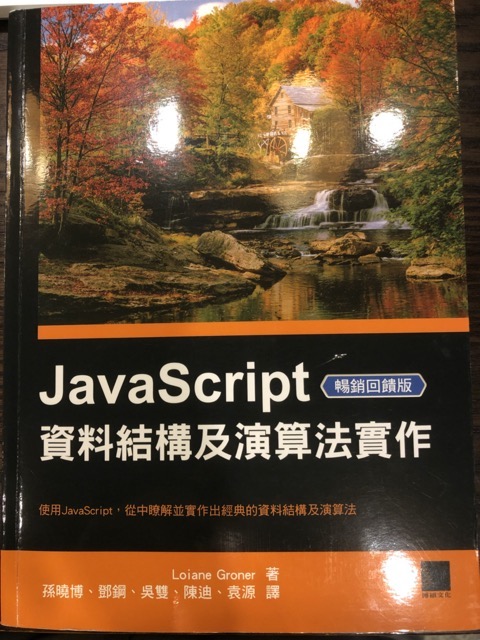章節連結
一個遵循FIFO(First In First Out)後進先出的原則。現實中的例子就是排隊,先來先服務的概念。以 JavaScript 的 array 陣列相關函式來呈現這個資料結構,算是滿輕鬆寫意的。
指令
|
1 2 3 4 5 6 7 8 9 10 11 12 13 14 15 16 17 18 19 20 21 22 23 24 25 26 27 28 29 30 31 32 33 34 35 36 37 38 39 40 41 42 43 44 45 46 47 48 49 50 51 52 53 54 55 56 57 58 59 60 61 62 63 64 65 66 67 68 69 70 71 72 73 74 75 76 77 78 79 80 81 82 83 84 85 86 87 88 89 90 91 |
/*Queue*/ function Queue(){ var items=[]; this.enqueue = element =>{ return items.push(element) } this.dequeue = () =>{ return items.shift() } this.front = () =>{ return items[0] } this.isEmpty = () =>{ return items.length === 0 } this.clear = () =>{ return items = [] } this.size = () =>{ return items.length } this.print = () =>{ return console.log(items.toString()) } } /*Queue with different priority*/ function PriorityQueue(){ let items = [] //以函式產生佇列內的各個元素實例(instance) function QueueElement(element,priority){ this.element = element this.priority = priority } this.enqueue = (element,priority) =>{ let queueElement = new QueueElement(element,priority) let added = false for (let i=0; i<items.length; i++){ if (queueElement.priority < items[i].priority){ items.splice(i,0,queueElement) added = true break } } if (!added){ items.push(queueElement) } } this.dequeue = () =>{ return items.shift() } this.front = () =>{ return items[0] } this.isEmpty = () =>{ return items.length === 0 } this.clear = () =>{ return items = [] } this.size = () =>{ return items.length } this.print = () =>{ return console.log(items) }; } let priorityQueue = new PriorityQueue() priorityQueue.enqueue("John",2) priorityQueue.enqueue("Sandy",4) priorityQueue.enqueue("Mandy",2) priorityQueue.enqueue("Jack",1) priorityQueue.enqueue("Camila",1) priorityQueue.enqueue("Tom",3) priorityQueue.print() |
LeetCode 練習記錄
|
1 2 3 4 5 6 7 8 9 10 11 12 13 14 15 16 17 18 19 20 21 22 23 24 25 26 27 28 29 30 31 32 33 34 35 36 37 38 39 40 41 42 43 44 45 46 47 48 49 50 51 52 53 54 55 56 57 |
// 622. Design Circular Queue https://leetcode.com/problems/design-circular-queue/ var MyCircularQueue = function(k) { this.items = [] this.size = k+1 this.front = 0 this.rear = 0 }; MyCircularQueue.prototype.enQueue = function(value) { if(!this.isFull()){ this.items[this.rear] = value this.rear = (this.rear+1)%this.size return true } return false }; MyCircularQueue.prototype.deQueue = function() { if(!this.isEmpty()){ this.front = (this.front+1)%this.size return true } return false }; MyCircularQueue.prototype.Front = function() { if(!this.isEmpty()){ return this.items[this.front] } return -1 }; MyCircularQueue.prototype.Rear = function() { if(!this.isEmpty()){ return this.items[(this.rear+this.size-1)%this.size] } return -1 }; MyCircularQueue.prototype.isEmpty = function() { return this.front === this.rear }; MyCircularQueue.prototype.isFull = function() { return (this.rear+1)%this.size === this.front }; /** * Your MyCircularQueue object will be instantiated and called as such: * var obj = new MyCircularQueue(k) * var param_1 = obj.enQueue(value) * var param_2 = obj.deQueue() * var param_3 = obj.Front() * var param_4 = obj.Rear() * var param_5 = obj.isEmpty() * var param_6 = obj.isFull() */ |

